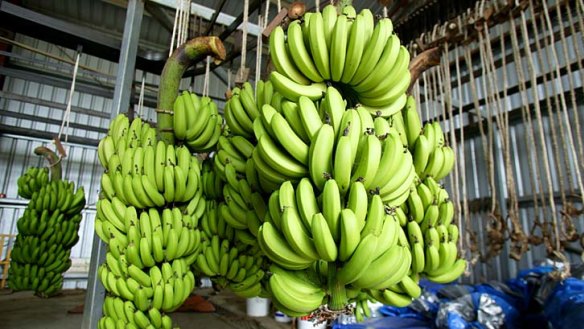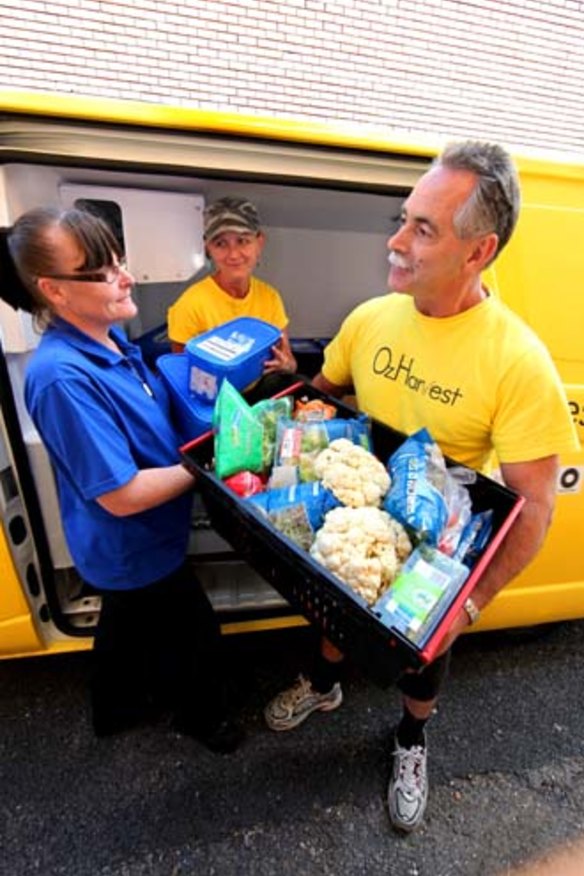From the rubbish bin to the restaurant table

In just eight weeks of operation, The Real Junk Food Project managed to intercept and cook 300 kilograms of food destined for the rubbish bin.
Collected from Melbourne restaurants, markets and even the cast-offs of food rescue operation SecondBite, the meals were cooked by former Gasolina head chef Adam Smith and his team of volunteers as a free weekly feast using public barbecues. The meals were served up to whoever was nearby and hungry.
“We would never cook with anything that wasn’t waste, not even salt or pepper or oil – unless it was given to me,” Smith says.
“It was to show people that they didn’t need to have everything that was in the recipe book to create a meal ... It was about using what you had and creating meals out of it.”
The project has now come to an end, although Smith is hoping to resurrect it in a more permanent way by starting up a restaurant bound by this philosophy. He’s not the only one going down this path. The Gleaners Kitchen in the US serves meals made of items sourced from nearby garbage bins. In February, the United Nations treated government officials to a five-course feast made from African produce that European supermarkets had rejected.
The aim of these ventures? To shine a spotlight on the food waste problem. According to the UN, roughly a third of the food produced for human consumption worldwide is lost or wasted each year. It has chosen food waste as the theme for World Environment Day, held today. In Australia, the National Waste Report estimates that each of us throws away 361 kilograms of food every year.

“When I had to do some farm work in north Victoria I witnessed first-hand the impact that food waste was having on a small area,” Smith says.
“Supermarkets cancelling contracts at short notice and the strict criteria that they have on size and appearance of fruit and vegetable produce ... We are a nation that literally grows and makes things to waste.”
One of the reasons why so much fresh produce ends up going to waste is that Australians are “spoilt” for choice when it comes to food, says Colin Gray, chief executive of the NSW Chamber of Fruit and Vegetables. In fact, we produce more fruit and vegetables ‘‘than we can possibly consume’’.
‘‘What that means though is we’re more discerning as a public,’’ he says. ‘‘It means the small fruit, the large fruit, something with a bit of a mark is not what the consumer wants to buy.”
But food politics lecturer Dr Gyorgy Scrinis from the University of Melbourne says the focus shouldn’t just be on the consumer, but on the whole supply chain.
“You go round in circles. Supermarkets blame consumers, saying that’s what consumers want but on the other hand, supermarkets are also interpreting – selectively interpreting – what consumers want,” Dr Scrinis says.
Few studies have focused on pre-consumer food waste. One 2011 study by researchers at Bond University, Queensland University of Technology and Griffith University, however, found that up to 30 per cent of the north Queensland banana crop was left at the farm gate – 78 per cent of that for cosmetic reasons.
Michael Silm, a grower with 40 years’ experience in the fruit industry, says the specifications required to meet the standards of the major supermarkets made it “very difficult for growers”.
“They demand perfect fruit and if there’s any small blemishes or anything that’s on the skin, they won’t accept it.”
Growers have to reject up to 30 per cent of fruit every harvest for purely cosmetic reasons so they can meet retailers’ quality expectations, he added.
Dr Scrinis says that Australia’s supermarket duopoly means manufacturers are often left bearing the costs of the food the major retailers leave behind.
“Supermarkets have a lot of power in the supply chain,” Dr Scrinis says.
“When they talk about reducing food waste they’re talking about reducing what goes in their bins out the back, not what gets sent back to the manufacturer or what gets left at the farm gate.”
A Coles spokesman said the retailer works “collaboratively with growers … by agreeing quality specs that cover size, colour, blemishes, speed to store, eating quality”. The company declined to provide figures on how much food waste is sent to landfill each year. But its 2012 corporate sustainability report states that 98,902 tonnes ended up there. Only 7.5 per cent (7446 tonnes) of its total food waste was diverted from landfill to food charities SecondBite and Foodbank, and organic recycling.
Woolworths has a target of zero food waste to landfill by 2015 but refused to comment on how close it was to achieving this target. According to the company’s 2012 corporate sustainability report, Woolworths diverted 0.6 per cent (1980 tonnes) of its total waste disposal and recycling to food charities and 1.6 per cent (4733 tonnes) to composting and energy in 2012. It sent 111,800 tonnes of waste to landfill.
OzHarvest’s communications manager Louise Tran says the organisation receives valuable support from retailers including IGA and Woolworths. However, she said the size and quality of donations fluctuated dramatically between individual stores, depending on the personal relationship between OzHarvest drivers and the manager at the dock that day.
“A really good relationship can mean we get 6-8 pallets or half a tonne of food while in other stores it could be less,” Tran says.
“We’d love to work with upper management on having a chain-wide policy rather than decisions being made on a store-by-store basis.”
SecondBite CEO Elaine Montegriffo says the organisation’s partnership with Coles has allowed SecondBite to significantly widen its reach.“When a store comes online, there’s education for the staff about the SecondBite program, what we’re doing and the benefits,” she says.
“We’ve got clear procedures on what food is to be put aside for us.”
Restaurant reviews, news and the hottest openings served to your inbox.
Sign up